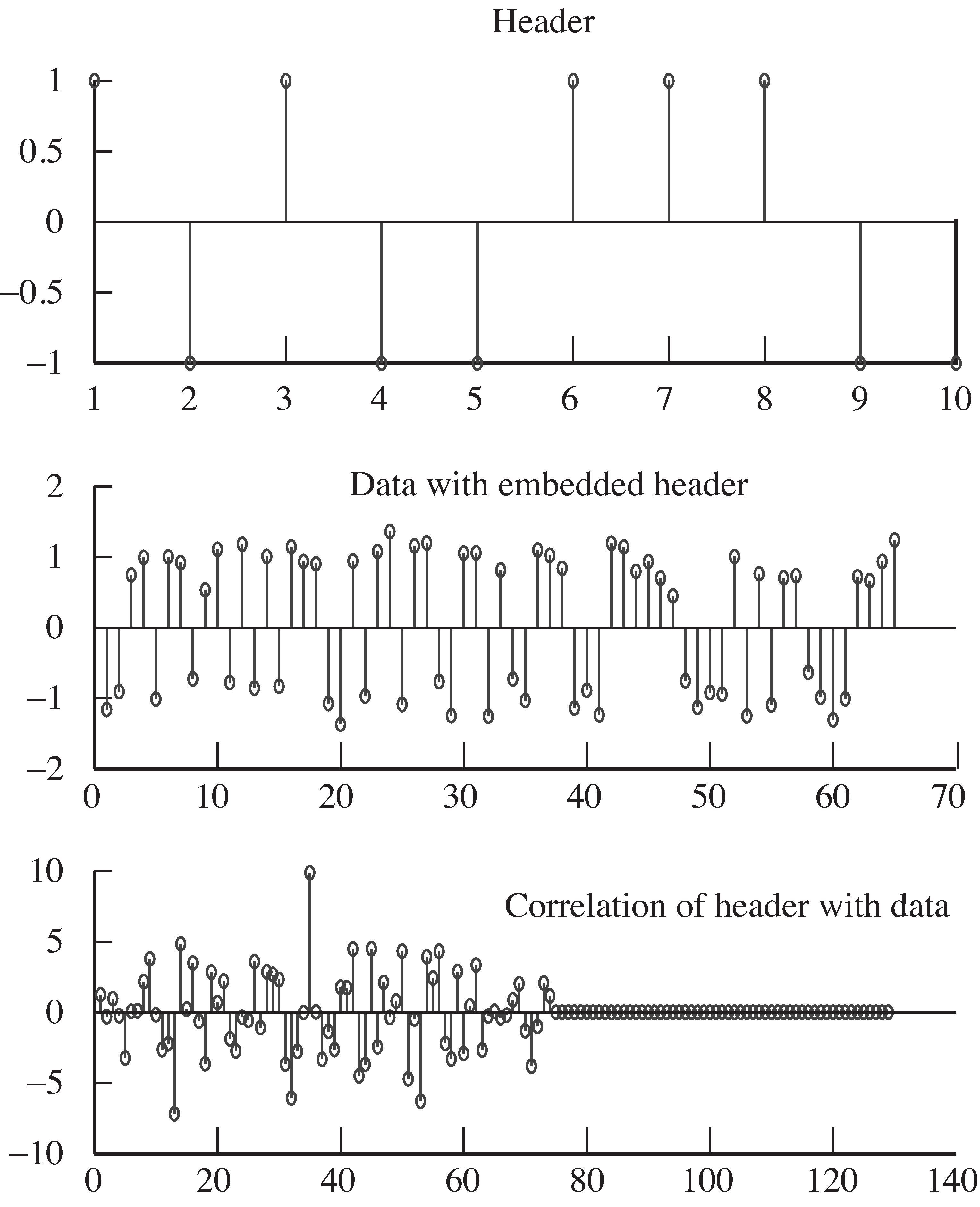| << Chapter < Page | Chapter >> Page > |
In discrete time, cross-correlation is a function of the time shift between two sequences and :
For finite data records, the sum need only be accumulated over the
nonzero elements, and the normalization by
is often
ignored. (This is how M
atlab 's
xcorr function works.)
While this may look like the convolutionEquation
[link] , it is not
identical since the indices are different(in convolution, the index of
is
instead of
).
The operation and meaning of the two processes are also not identical:convolution represents the manner in which the impulse response of a linear system
acts on its inputs to give the outputs, while cross-correlationquantifies the similarity of two signals.
In many communication systems, each message is parcelled into segments or frames, each having a predefined header.As the receiver decodes the transmitted message, it must determine where the message segments start. The followingcode simulates this in a simple setting in which the header is a predefined binary string and the data consist of a muchlonger binary string that contains the header hidden somewhere inside. After performing the correlation, the indexwith the largest value is taken as the most likely location of the header.
head=[1 -1 1 -1 -1 1 1 1 -1 -1]; % header is a predefined stringloc=30; r=25; % place header in position loc
data=[sign(randn(1,loc-1)) head sign(randn(1,r))]; % generate signal
sd=0.25; data=data+sd*randn(size(data)); % add noisey=xcorr(header, data); % do cross correlation
[m,ind]=max(y); % location of largest correlation
headstart=length(data)-ind+1; % place where header starts
correx.m correlation can locate the header within the data
(download file)

Running
correx.m results in a trio of figures much like
those in
[link] . (Details will differ each time it is
run, because theactual “data” are randomly generated with M
atlab 's
randn function.)
The top plot in
[link] shows the 10-sample binary header.
The data vector is constructed to contain
l=30 data values
followed by the header (with noise added), and then
more data
points, for a total block of 65 points.It is plotted in the middle of
[link] .
Observe that it is difficult to “see” where the headerlies among the noisy data record.
The correlation between the data and the header is calculatedand plotted in the bottom of
[link] as a function of the lag index.
The index where the correlation attains its largest valuedefines where the best match between the data and the header
occurs. Most likely this will be at index
ind=35 (as in
[link] ).
Because of the way M
atlab orders its output,
the calculations represent sliding the first vector (the header),term by term, across the second vector (the data).
The long string of zeroes at theend
Some versions of M
atlab use a different
convention with the
xcorr command. If you find that
the string of zeros occurs at the beginning, try reversingthe order of the arguments. occurs because the two vectors are of different lengths.
The start of theheader is given by
length(data)-ind+1 .

Notification Switch
Would you like to follow the 'Software receiver design' conversation and receive update notifications?